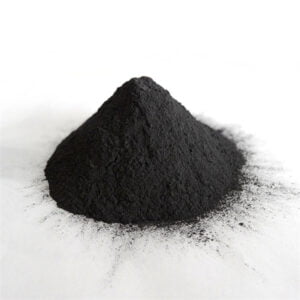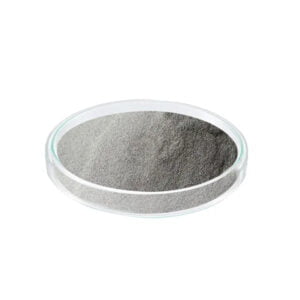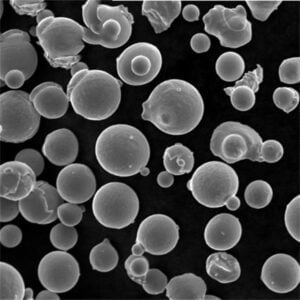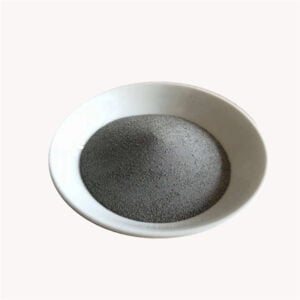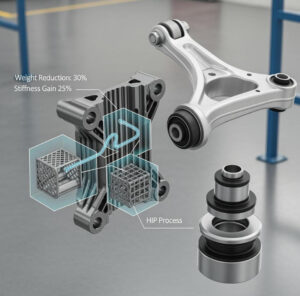3D Printing Inconel 625
Table of Contents
3D Printing Inconel 625 is a nickel-chromium-molybdenum alloy that can be 3D printed into high performance components for demanding applications. This guide covers everything about Inconel 625 for additive manufacturing.
Overview of 3D Printing with Inconel 625
Inconel 625 is a superalloy exhibiting:
- High strength and hardness at elevated temperatures
- Excellent corrosion resistance
- Good weldability and workability
- Oxidation and creep resistance
Key properties make it suitable for 3D printing complex geometries using powders:
- Available for major printing processes: DMLS, SLM, Binder Jetting
- Ability to print overhangs and internal channels
- Good dimensional accuracy and surface finish
- High density components with fine microstructure
- Properties comparable to or exceeding cast and wrought
- Reduction in waste compared to subtractive techniques
Inconel 625’s combination of strength, ductility, and corrosion resistance allows lightweight, high-performance printed parts across industries.
Composition of Inconel 625
Typical composition of Inconel 625 alloy:
- Nickel – 58%
- Chromium – 20-23%
- Molybdenum – 8-10%
- Iron – 5% max
- Niobium – 3-4%
- Trace amounts of C, Si, P, S
Key alloying elements like chromium, molybdenum, and niobium provide oxidation resistance at high temperatures, extra hardness, and precipitation strengthening. The composition can be adjusted based on application requirements.
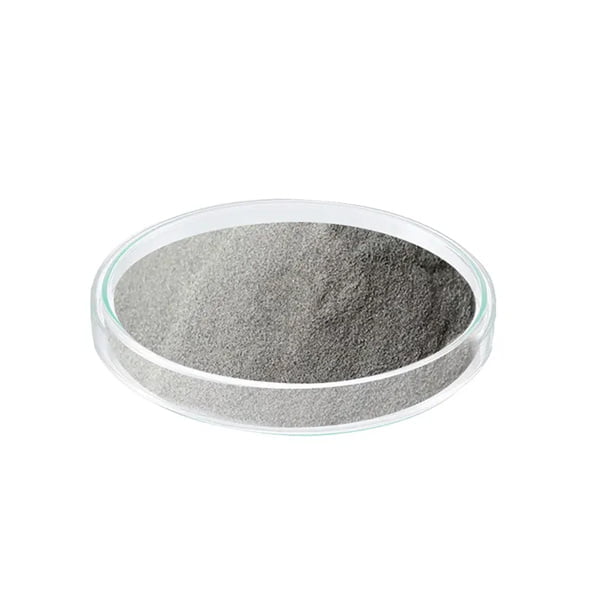
Key Properties of Inconel 625
Properties of Inconel 625:
- Density – 8.44 g/cm3
- Melting point – 1300°C
- Tensile strength – 760-1380 MPa
- Yield strength – 550 MPa
- Elongation – 50%
- Modulus of elasticity – 200-217 GPa
- Thermal conductivity – 9.8 W/m-K
- Coefficient of thermal expansion – 12.8 x 10-6 m/m°C
The balance of high strength, ductility, corrosion resistance, and stable properties at elevated temperatures make this superalloy useful for demanding applications.
Inconel 625 Powder for 3D Printing
Key characteristics of Inconel 625 powder for additive manufacturing:
Inconel 625 Powder Properties
- Particle shape – Mostly spherical
- Particle size – 15-45 microns
- Apparent density – 4 g/cm3
- Flowability – Slightly cohesive
- Purity – Nickel + other alloying elements > 99.5%
- Oxygen content – <500 ppm
Spherical morphology and controlled particle size distribution allows smooth powder spreading during printing. High purity minimizes defects.
Methods for 3D Printing Inconel 625
Popular additive manufacturing processes suitable for Inconel 625 include:
3D Printing Methods for Inconel 625
| Method | Description |
|---|---|
| DMLS | Uses laser to fuse metal powder |
| SLM | Selective laser melting of powder |
| Binder jetting | Binds powder with liquid agent |
| LENS | Laser engineered net shaping |
| EBM | Electron beam melting in vacuum |
DMLS and SLM offer high accuracy and surface finish. Binder jetting is more economical. EBM and LENS build larger near-net shape components. Parameters must be optimized for each process.
Applications of 3D Printed Inconel 625 Parts
Industries using additively manufactured Inconel 625 components:
Applications of 3D Printed Inconel 625
| Industry | Applications |
|---|---|
| Aerospace | Turbine blades, combustors, nozzles |
| Oil and gas | Valves, wellhead parts exposed to sour gas |
| Power generation | Heat exchanger tubing, pump shafts |
| Automotive | Turbocharger wheels, exhaust components |
| Chemical processing | Corrosion-resistant fluid handling parts |
Other uses include heat shields, press dies, nuclear reactors, sporting equipment, and biomedical implants leveraging strength, ductility, and biocompatibility.
Benefits of 3D Printing Inconel 625
Key advantages of additive manufacturing with Inconel 625:
Benefits of 3D Printing Inconel 625
- Ability to produce complex, optimized geometries
- Shorter lead times and lower costs versus machining
- Reduced weight due to topology optimization
- Less waste compared to subtractive techniques
- Superior material properties over casting
- No need for expensive tooling or dies
- Consolidation of subassemblies into single parts
- Customization and rapid prototyping
3D printing overcomes limitations of traditional fabrication to manufacture high-performance Inconel components.
Limitations of Printing Inconel 625
Challenges With 3D Printing Inconel 625
- High cost of Inconel 625 powder
- Requirement of inert gas during printing
- Difficulties in removing support structures
- Post-processing may be needed to relieve stresses
- Testing needed to qualify printed parts
- Lower ductility than wrought Inconel 625
- Limited number of qualified suppliers
- Large parts restricted by printer build volume
Process refinements and qualifications will expand adoption of additively manufactured Inconel 625 components for mission-critical applications.
Inconel 625 Powder Suppliers for 3D Printing
Reputable suppliers of Inconel 625 powder for AM include:
Suppliers of Inconel 625 Powder
| Company | Location |
|---|---|
| Sandvik | Germany |
| Praxair | USA |
| Carpenter Additive | USA |
| AP&C | Canada |
| SLM Solutions | Germany |
| LPW Technology | UK |
These companies manufacture Inconel 625 powder using inert gas atomization and strictly control particle size distribution, morphology, oxygen content, and other quality attributes.
Inconel 625 Material Cost Analysis
Inconel 625 Powder Cost
| Quantity | Price per kg |
|---|---|
| 1-10 kg | $100-150 |
| 10-50 kg | $80-120 |
| >50 kg | $50-100 |
Cost is higher than stainless steel powder but lower than reactive alloys like titanium. Bulk order discounts apply. Part cost also depends on product geometry and build rates.
Comparative Analysis of Inconel 625
Comparison of Inconel 625 with Stainless Steel and Cobalt Chrome
| Alloy | Inconel 625 | 316L Stainless Steel | CoCr Alloy |
|---|---|---|---|
| Density (g/cm3) | 8.4 | 8.0 | 8.3 |
| Tensile Strength (MPa) | 1035 | 515 | 655 |
| Melting Point (°C) | 1300 | 1370 | 1290 |
| Corrosion Resistance | Excellent | Good | Fair |
| Cost | High | Low | Moderate |
| Printability | Fair | Excellent | Good |
Inconel 625 offers the best high temperature performance but has higher material costs. Stainless steel is easier to print and less expensive. Cobalt chrome provides a balance for dental and medical uses.

FAQs
Q: Whatparticle sizeis optimal for3D printingInconel 625?
A: A particle size range of 15-45 microns is recommended, with a spherical morphology and tight distribution for optimal flowability and high packing density during printing.
Q: Which printing process is most suitable for Inconel 625?
A: DMLS and SLM using a high-powered laser provide the best accuracy, density, and surface finish. Binder jetting offers faster build speeds but lower mechanicals.
Q: Does Inconel 625 require heat treatment after 3D printing?
A: Yes, a solution annealing and aging heat treatment cycle is often performed to relieve stresses and achieve optimum ductility, strength, and other mechanical properties.
Q: What industries use 3D printed Inconel 625 the most?
A: Aerospace is the biggest adopter for combustion components. Oil and gas, power generation, automotive, and chemical processing also leverage 3D printed Inconel 625.
Q: Is it possible to 3D print functionally graded Inconel 625 parts?
A: Yes, voxel control methods allow continuously varying compositions and microstructures within a single printed part by precise powder mixing and laser modulation.
Q: Does Inconel 625 require hot isostatic pressing after additive manufacturing?
A: While HIP can eliminate internal voids and improve fatigue resistance, recent process refinements now allow full density to be achieved during printing for most applications.
Q: What finishing processes are used on printed Inconel 625?
A: Printed parts often undergo abrasive tumbling, shot peening, grinding, and polishing to smooth surfaces and remove supports. Hot isostatic pressing can also be applied.
Q: Are the material properties of 3D printed Inconel 625 comparable to wrought?
A: Correctly printed and processed Inconel 625 can match and even exceed the tensile strength, ductility, fracture toughness and other properties of conventionally processed wrought alloy.
Q: What design considerations apply for Inconel 625 AM parts?
A: Fine features require thicker walls. Designs should avoid overhangs, minimize supports, and account for thermal stresses. Modules can be consolidated into monolithic components.
know more 3D printing processes
Frequently Asked Questions (FAQ)
1) What powder specifications matter most when 3D Printing Inconel 625?
- Spherical morphology, PSD 15–45 µm (LPBF), O ≤0.06–0.10 wt%, N ≤0.03 wt%, low satellites, Hall/Carney flow within spec, and consistent apparent/tap density. These drive spreadability, density, and defect control.
2) What post-processing sequence is recommended for high-reliability parts?
- Typical route: stress relief → HIP (optional but recommended for fatigue/leak-critical parts) → solution anneal (~1,150–1,200°C) → rapid quench → aging if required by spec → machining/finishing → NDT (CT/dye pen) and mechanical qualification.
3) How does Inconel 625 compare to 718 for AM?
- 625: solid-solution strengthened, excellent corrosion and weldability, easier to process with less cracking, lower high-temp strength than 718. 718: precipitation strengthened, higher strength at 650–700°C but more complex heat treatment and cracking sensitivity.
4) What build strategy reduces porosity and keyholing in LPBF?
- Maintain moderate volumetric energy density, use contour scans, optimize hatch spacing, ensure high-purity inert atmosphere (O2 <100 ppm), and validate with melt pool monitoring and density checks (Archimedes + CT for critical parts).
5) Can powder be reused without degrading performance?
- Yes, if controlled: sieve between builds; monitor O/N/H, PSD drift, and flow; set reuse limits and blend with virgin to maintain interstitial/spec targets. Track exposure time and keep powder under dry, high-purity argon.
2025 Industry Trends
- Certified process parameter sets: OEMs release 625 PBF-LB recipes targeting near-zero lack-of-fusion with improved contour strategies and gas flow mapping.
- Corrosion-first applications: Increased adoption in offshore wind, geothermal, and sour-service components where 625 outperforms 718 in chloride/sulfide media.
- Data-rich CoAs: Routine inclusion of raw PSD files, SEM morphology, O/N/H trends, and powder exposure logs to accelerate PPAP/FAI.
- Sustainability focus: Powder take-back/reconditioning programs and argon recirculation cut total cost of ownership.
- Binder jetting maturation: Finer 625 cuts (5–25 µm) and advanced sinter profiles improve density for non-pressure-retaining parts.
2025 Snapshot: 3D Printing Inconel 625 KPIs
| Metric (2025e) | Typical Value/Range | Notes/Source |
|---|---|---|
| LPBF PSD | D10 15–20 µm; D50 25–35 µm; D90 40–50 µm | ISO/ASTM 52907 context |
| Oxygen (AM-grade) | ≤0.06–0.10 wt% | Supplier CoAs |
| As-built relative density | ≥99.5% with tuned parameters | CT verification |
| Post-HIP density | ≥99.9% | Leak- and fatigue-critical |
| Typical UTS (post-HT) | ~800–1,000+ MPa | Process/spec dependent |
| Price band (powder) | ~$60–$150/kg (spec/region/volume) | Market quotes |
| Lead time | 3–7 weeks stocked; 8–12 weeks MTO | Supplier disclosures |
Authoritative sources:
- ISO/ASTM 52907; ASTM F3049 (powder characterization): https://www.astm.org, https://www.iso.org
- AMS 5666/5599 and ASTM B443/B446 (alloy forms/heat treatment guidance)
- ASM Handbook, Vol. 7: Powder Metallurgy; Vol. 13A Corrosion: https://www.asminternational.org
- AMPP/NACE sour-service guidance: https://www.ampp.org
Latest Research Cases
Case Study 1: LPBF Inconel 625 Heat Exchanger with Topology Optimization (2025)
- Background: A geothermal OEM needed compact, corrosion-resistant exchangers with reduced pressure drop.
- Solution: Printed 625 using LPBF with optimized lattice channels; high-purity argon (O2 <50 ppm), contour + remelt strategy; HIP → solution anneal; internal surface finishing via abrasive flow machining.
- Results: Relative density 99.9% post-HIP; pressure drop −21% vs. machined design; ASTM G28 Method A corrosion rate matched wrought baseline; production lead time −38%.
Case Study 2: Binder-Jetted 625 Impellers for Chemical Pumps (2024/2025)
- Background: A chemical processing firm sought spare-part agility for corrosive services.
- Solution: Adopted 5–25 µm 625 powder, solvent debind + high-temp sinter in H2/N2-controlled atmosphere; selective HIP for pressure-retaining variants; final machining of sealing surfaces.
- Results: Achieved 96–98% density as-sintered; HIPed parts ≥99.8%; lifecycle cost −15% with on-demand spares; cavitation performance on par with cast 625 after surface finishing.
Expert Opinions
- Dr. John A. Slotwinski, Additive Manufacturing Metrology Expert (former NIST)
- Viewpoint: “For 3D Printing Inconel 625, density is necessary but not sufficient—monitoring interstitials and PSD tails across reuse cycles is critical to assure repeatable mechanicals.”
- Prof. Tresa M. Pollock, Distinguished Professor of Materials, UC Santa Barbara
- Viewpoint: “Contour control and heat management mitigate keyholing and microsegregation in 625; pairing with HIP enables fatigue performance competitive with wrought.”
- Dr. Christina Bertulli, Director of Materials Engineering, EOS
- Viewpoint: “Data-rich CoAs and validated process maps shorten qualification for 625 beyond aerospace—especially in energy and chemical sectors.”
Practical Tools/Resources
- Standards: ISO/ASTM 52907; ASTM F3049; relevant AMS specs (e.g., AMS 5666 for heat treat guidance); ASTM E8/E18 for tensile/hardness
- Corrosion testing: ASTM G28 (intergranular corrosion in Ni-Cr-Mo alloys); ASTM G48 (pitting); ASTM G31 immersion tests
- Metrology: Inert gas fusion (O/N/H), laser diffraction (PSD), SEM for morphology, CT for porosity, in-situ melt pool monitoring
- Process control: Gas purity monitors (O2 <100 ppm), powder reuse SOPs, exposure time logging, SPC on density/mechanicals
- Design/simulation: Ansys/Simufact Additive for distortion and support optimization; topology optimization tools for weight reduction
Implementation tips:
- Specify CoA with chemistry incl. interstitials, PSD (D10/D50/D90), morphology images, flow/tap/apparent density, and lot genealogy.
- Use tuned LPBF parameters with contour + remelt; validate density via CT for pressure-retaining parts.
- Plan HIP for fatigue- and leak-critical applications; follow with solution anneal and required finishing.
- For corrosive service, confirm performance with ASTM G28/G48 testing and surface finish controls on wetted geometries.
Last updated: 2025-10-13
Changelog: Added focused 5-question FAQ, 2025 KPI table, two recent case studies (LPBF heat exchanger and binder-jetted impellers), expert viewpoints, and practical tools/resources with implementation tips for 3D Printing Inconel 625
Next review date & triggers: 2026-04-20 or earlier if ISO/ASTM/AMS standards update, major supplier CoA practices change, or new data on HIP effects and powder reuse for Inconel 625 AM is published
Share On
MET3DP Technology Co., LTD is a leading provider of additive manufacturing solutions headquartered in Qingdao, China. Our company specializes in 3D printing equipment and high-performance metal powders for industrial applications.
Inquiry to get best price and customized Solution for your business!
Related Articles
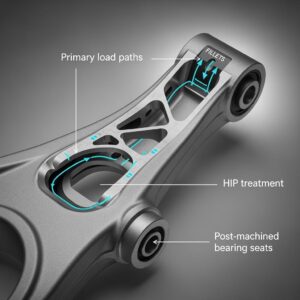
Metal 3D Printing for U.S. Automotive Lightweight Structural Brackets and Suspension Components
Read More »About Met3DP
Recent Update
Our Product
CONTACT US
Any questions? Send us message now! We’ll serve your request with a whole team after receiving your message.







